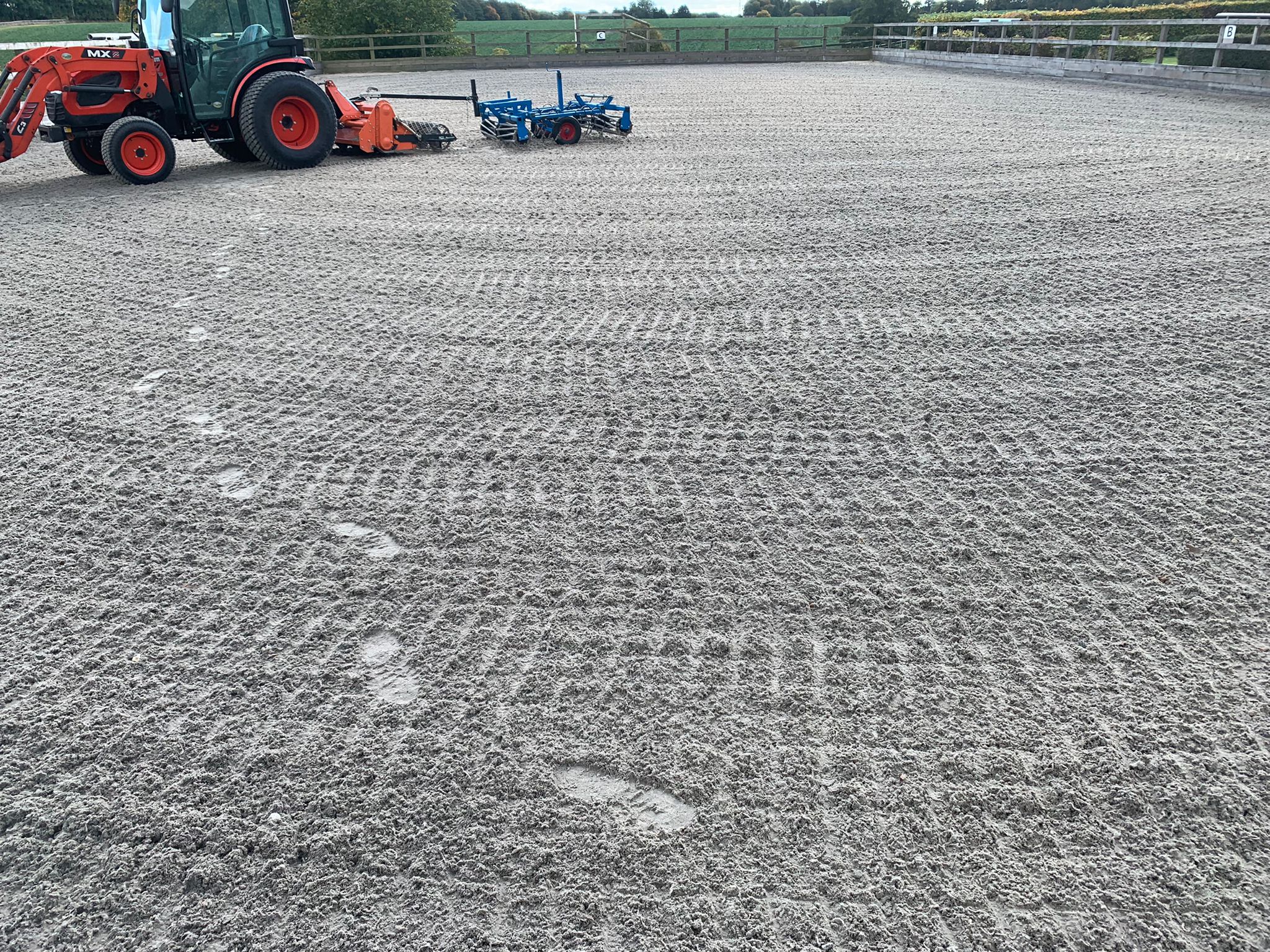
Choosing the Wrong Surface: A Silent Threat to Your Horse’s Welfare
Choosing the right equestrian surface for your horse’s welfare is paramount. The wrong surface for your chosen discipline could mean unwanted vet bills for horses. The surface quality greatly affects the horse’s movement, posture and balance.
Choosing the wrong arena surface can increase the risk of tendon and ligament injuries, as they may not provide adequate cushioning or support.
Challenges of Inadequate Equestrian Surfaces
Let’s consider some of the main challenges when riding in your arena:
- How often do you want to ride after work or school and the surface of your school is either waterlogged or frozen?
- Have you ever lunged your horse and you’ve been concerned about them slipping on a thin part of the surface?
- Have you ever ridden on a hot day in clouds of dust that makes both yourself and your horse cough?
Whatever the issue, choosing the wrong surface will only make it worse. This article will cover the issues that the implications of an inadequate surface and your horse’s welfare.
Choose the Right Arena Surface for Your Horse’s Welfare and Discipline
It is important to understand that arena surfaces behave differently depending on what forces or loads they are subjected to and at what speed they are loaded.
It’s a bit like couples sleeping on a mattress. If they are significantly different weights, the mattress doesn’t work for both of them: one person may end up with a bad back.
When a horse lands on a surface after jumping a fence, the impact with the surface is at high speed with a large amount of weight loading the limb. Therefore the horse will
“feel” characteristics deeper down in the surface compared to what a dressage horse may feel.
For dressage horses, surfaces that absorb shock and return energy contribute to optimal performance. They enable your horse to perform movements with ease. This reduces the effort required and allows for better execution of dressage manoeuvres.
How Different Arena Materials Affect Horses
Firmness and Impact Absorption: The firmness or hardness of the surface affects the horse’s biomechanics. Surfaces that are too hard can lead to discomfort and injury as they cannot adequately dampen impact forces. Conversely, overly soft surfaces may also be harmful as they provide insufficient support, increasing the risk of strain injuries.
Material Blend: Surfaces made of equestrian grade silica sand and either dual stabiliser or our pro-advanced stabiliser fibre are designed to offer excellent shock absorption. This reduces the risk of injuries by providing a balance between firmness and cushioning, which is crucial for the horse’s musculoskeletal health. It ensures a secure footing that facilitates a strong push-off for your horse taking off and landing while jumping.
Arena Maintenance Requirements
Some materials, such as silica sand, while long-lasting and promoting effective drainage, may require more regular maintenance.
Follow these guidelines to maintain the surface’s integrity and safety:
- Picking up dropping, or carrying out regular maintenance, can add years to your surface.
- Watering helps keep the surface dust-free and improves stability
- Ensure adequate drainage
- Consistent grading and grooming help in maintain an even surface to prevent the formation of ruts and uneven spots
Prioritising Horse Welfare with the Right Arena Surface
Selecting the right equestrian surface is a critical decision that influences not only the performance and training of your horse but also its overall well-being. The right arena surface minimises the risk of injuries, enhances performance in specific disciplines, and contributes to the longevity and health of your horse.
Remember, the investment in a suitable equestrian surface is an investment in the safety, health and happiness of your equine partner.
Personalised Surface Advice
Contact our team of experts for personalised advice and solutions tailored to your specific needs. Start your journey today towards a safer, more effective riding environment that prioritises both the welfare and performance of your horse.

